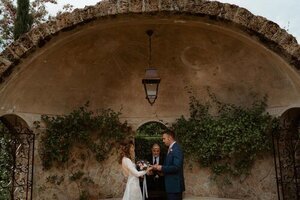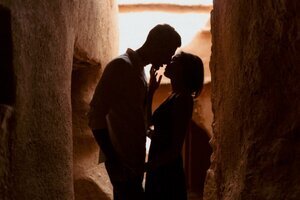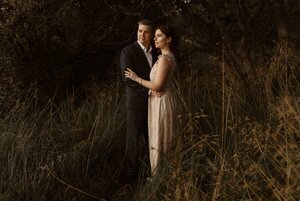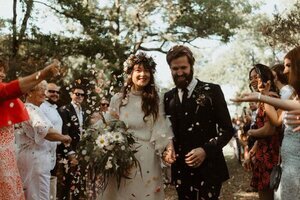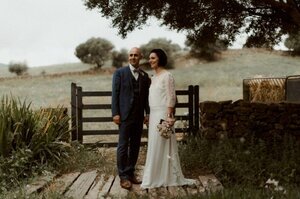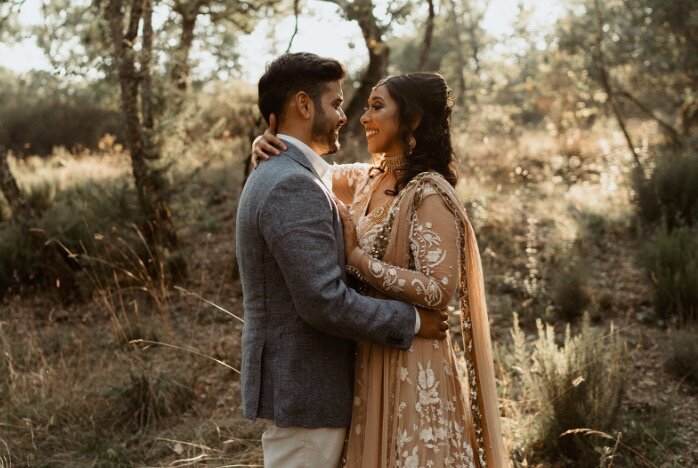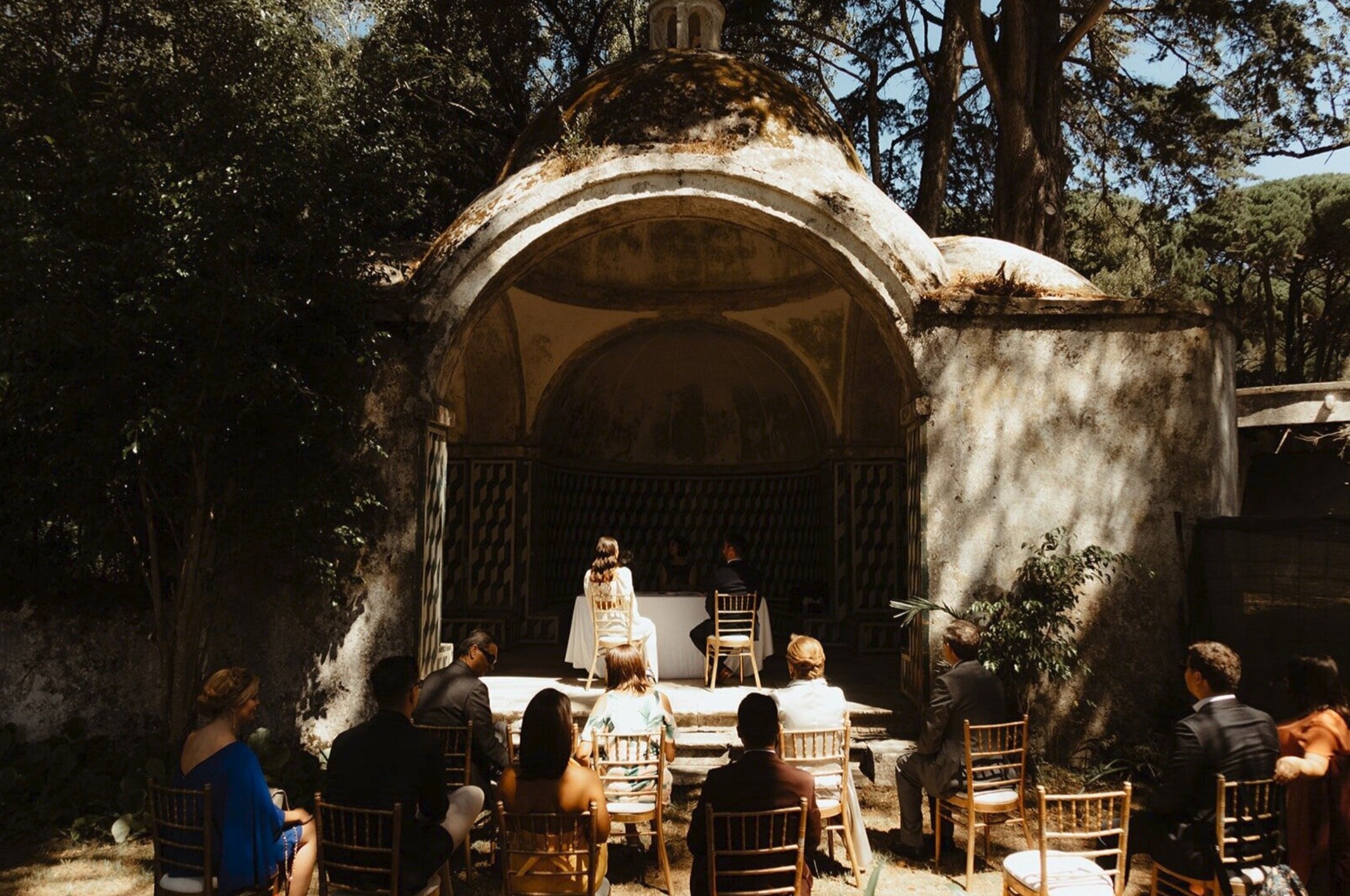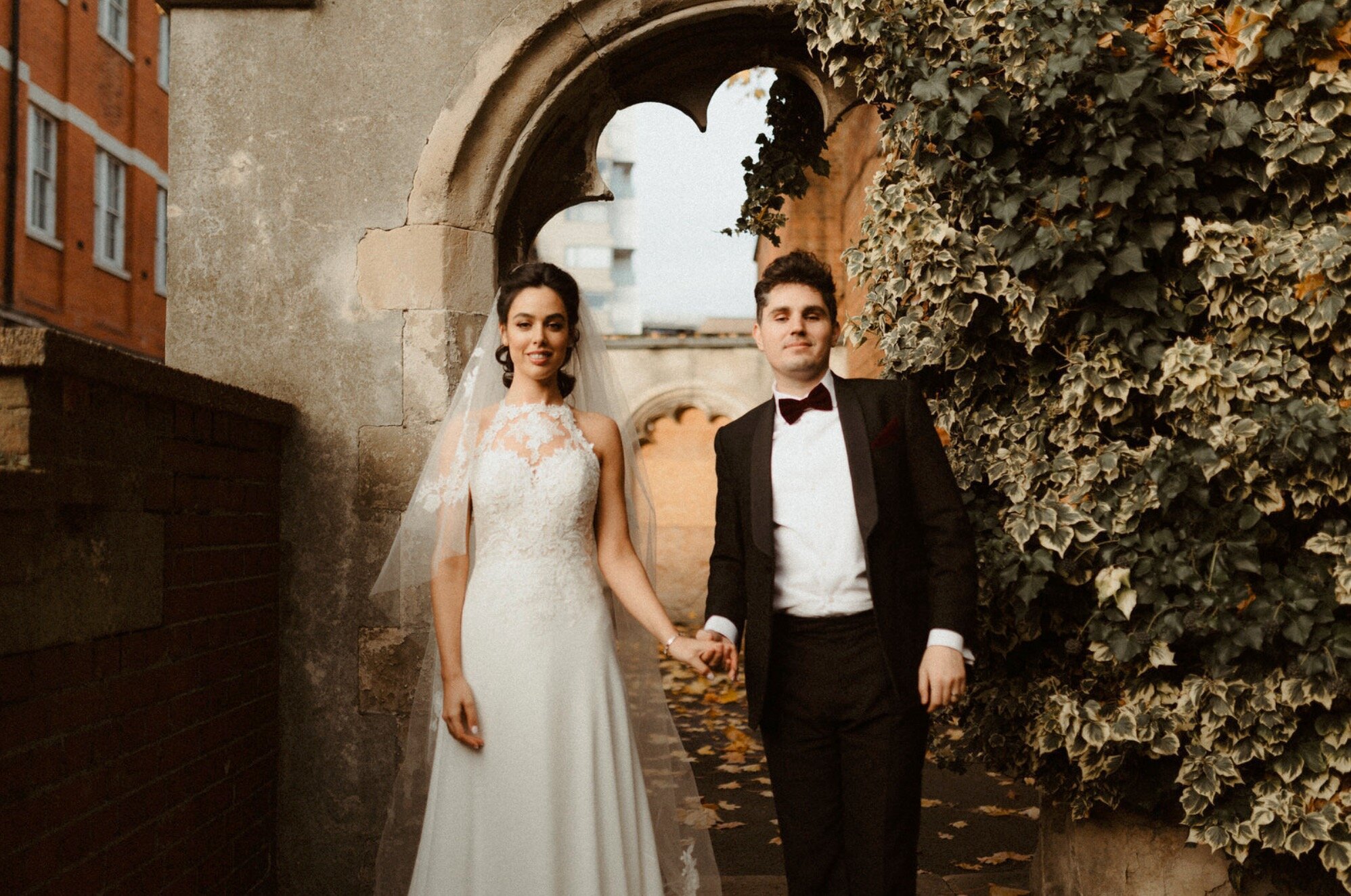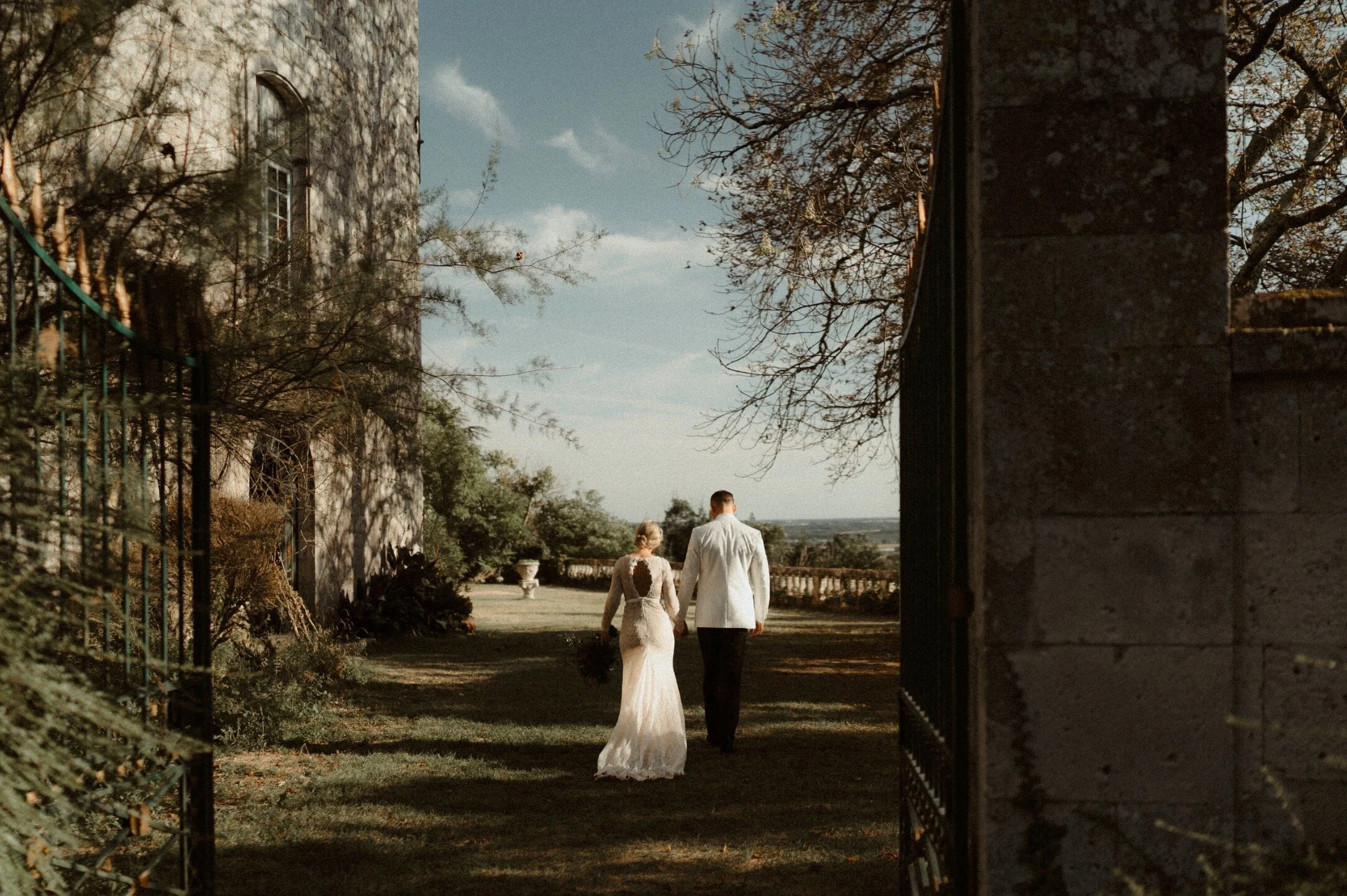
GUADALAJARAWEDDING AND ELOPEMENT PHOTOGRAPHER
Photographer for Small, Intimate Weddings and Elopements
by Eric-René Penoy
Guadalajara Wedding Photographer,
Thank you so much for your visit to my website. If you are looking for a wedding photographer with an alternative approach in a journalistic way, fine art, and storytelling, you are definitely on the page you were looking for.
I am a French destination wedding photographer and love to travel all around the world. I am now based in Mallorca, Spain during summer and Guadalajara, Mexico during Winter.
It will be my great pleasure to have a minute of your attention to have a look at my work, have a look at my previous weddings abroad.
I am based, as you know now in Europe but it is always a pleasure to go to Guadalajara and be able to do my passion and have a wonderful time with creative people.
If you wish to join me, it will be my pleasure to hear from you. May I ask you to send me a message and I will answer you right away (usually within 24 hours) and see if there is a potential way to work for the most important day of your life.
If you want to visit my latest small and intimate wedding stories, know more about me, about my vision, or simply if you want to contact me.
Rangefinder Rising Star Best Wedding Photographer in the World 2019.
Best Photographer in Europe at BODAF Conference 2017.
Best of the best Junebug Wedding 2017 and 2018.
Nominated to be the best wedding photographer at Way Up North Photo Conference in 2020.
EST. 2014. Over 170 weddings.
PRICING
Weddings
Start at 1990 Euros
Love Sessions
Start at 250 Euros
Elopements
Start at 1400 Euros
ARE YOU PLANNING A SPECIAL EVENT IN YOUR LIFE IN LOS CABOS? PLEASE CONTACT ME.
FREE GUIDES FOR COUPLES
Please to find some guides for your wedding day.
I believe I am full of advises for your wedding day and very easy going. I have prepared some articles to help you to find the right place to get married or to be inspired in some places like Morocco or Mexico, Spain and Portugal. I have also written an article about the most underrated locations in Europe to have your small and intimate wedding with friends and family.
Since July 2014, I document your intimate wedding or elopement and I have seen a lot of love stories, full of joy and emotions. I am moved by telling the story of your day in the most natural and genuine way possible. No need to spend one hour behind the church with me to take the couple photographs, I will always value to let you spend time with family and friends. Of course, I do group photographs too.
Most of my couples define themselves are shy in front of the camera, I believe simply they don’t know how easy it is to spend a simple time with your partner in front of my camera. I will follow you from getting ready to the dance floor in the most natural way possible.
I photograph all kinds of weddings, elopements, proposals, engagement shoots, editorial works.
All my couples also receive a special service before the wedding/elopement day.
As far as you have chosen to work with me for your Wedding, your Elopement, your Couple Session, you will have access to very personal service, also you have access to all photographs, a private and secured gallery, and print options, or beautiful albums and products delivery.
I am always honored to be considered to document your intimate wedding, as rural, in a private garden, a backyard, a mountain peak, in the Desert, during Sunrise or Sunset, under a teepee, or even to create your home story.
I am always ready to follow you.
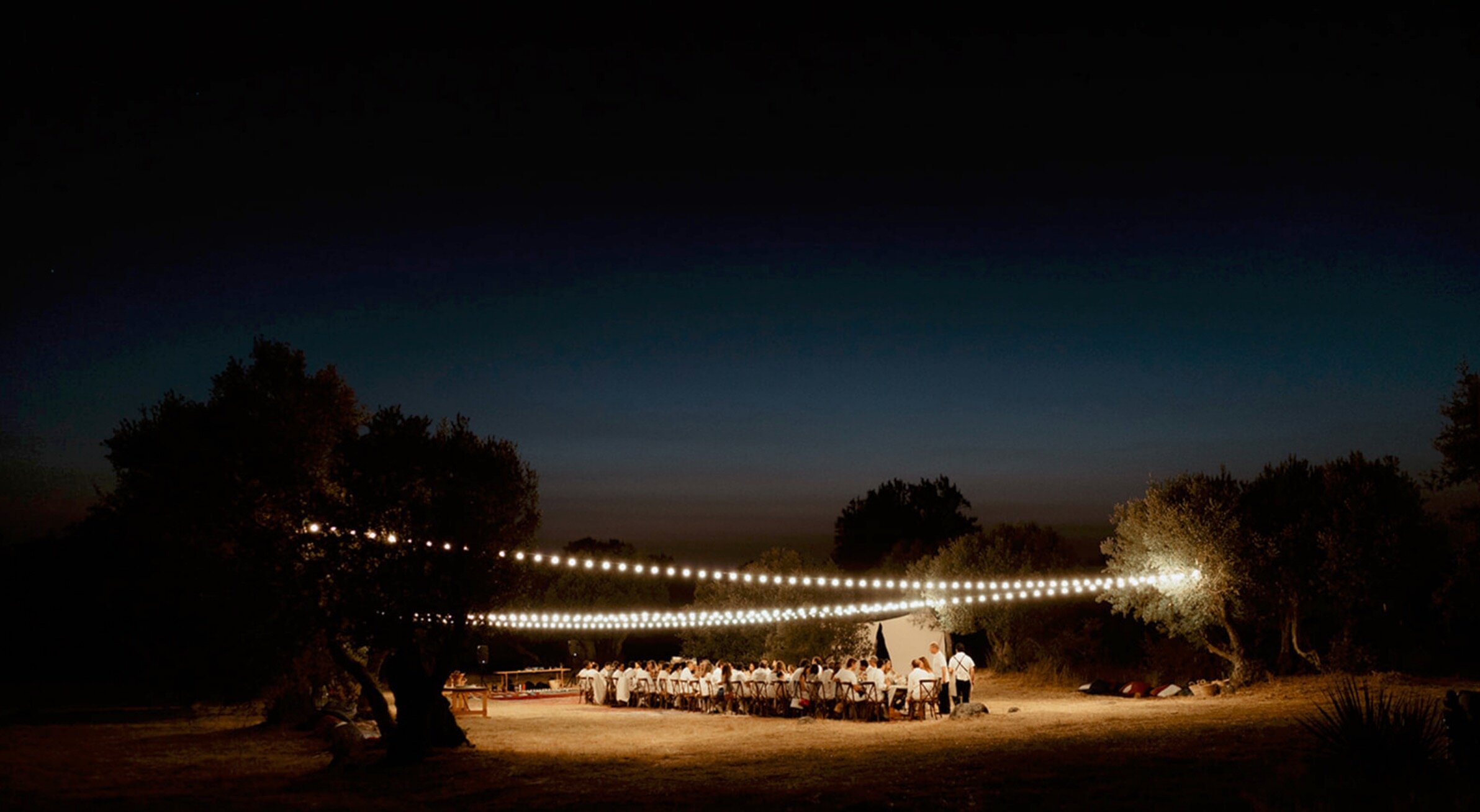
Testimonials, take a look at my couple’s reviews.
Their Voices &Words.
“If you talk to a man in a language he understands, that goes to his head. If you talk to him in his own language, that goes to his heart.”
— Nelson Mandela
“There is truth, dedication, movement (even the ones that are not gifs) … we can even “smell” how the day was, the temperature, the light, the wind, the sounds.
Thank you! So happy we chose each other.”
”The BEST wedding photographs we could have asked for.
We have made the best choice choosing Eric-Rene for our wedding. Not only he went so easy going and relaxed, we were not even sure he was around taking these amazing images. We simply let him do his magic. Well after seen the final gallery, we could not be any happier. He did an Amazing job. It was super important for us to choose the perfect photographer for us, someone genuine and creative but mostly someone discreet as we are quite shy in front of the camera. When it came to the couple shots during the wedding day, it actually went super easy and it was very refreshing. For the rest of the day, he captured beautiful and simple moments. 3 Weeks after, we received what Eric calls a little surprise that we were so happy to discover, it was unexpected but also very emotional. He is simply the kindest and the best photographer.”
Are you searching for a Wedding or Event photographer in Guadalajara?
I have been covering over 170 Weddings since July 2014, I can say that I am full of advice and help for your big day.
My couples are similar and so different at the same time. I would say that they have certain similar characteristics, they prefer to spend time with their families and friends rather than spending an hour for taking the couple photos, they are usually shy, they don’t feel at ease to be the center of the attention, they have a certain knowledge about art, sometimes photography and painting.
Authenticity for Intimate Wedding and Elopement photojournalism. I have my own philosophy, my unique style, and an experience of over 170 weddings since 2014.
Do you want to have an intimate wedding in Los Cabos that reflects your journey as a couple, your passions, and your spirit of adventure, or maybe in your family house?
This is elopement photography for couples who want to ignore tradition and get married in a way that feels authentic to them. As photographer my purpose is to discreetly capture the story of your day in an honest and heartfelt way, without posing or intruding. I will record every aspect, from the raw emotions and poignant moments as they unfold, to the details you won’t want to forget.
I care deeply about creating meaningful connections with every couple who invites me to be a part of their journey. My approach is to innovate, not to conform to conventions. Your elopement experience should be as personal, genuine, and unique as you are.
Emotional Photographer documenting emotional Weddings.
Since July 2014, I document your intimate wedding, your Minimony, Sequel Wedding, Micro wedding or Adventurous Elopement, proposal and engagement and I have seen a lot of love stories, full of joy and emotions. It has a lot of different names but only the story matters. I am moved by telling the story of your day in the most natural and genuine way possible. No need to spend one hour behind the church with me to take the couple photographs, I will always value to let you spend time with family and friends. This is your day, not mine.
Most of my couples define themselves as shy in front of the camera, I believe simply they don’t know how easy it is to spend a few simple moments with their partner in front of my camera. I will follow you from getting ready to the dance floor in the most natural way possible. To deliver a poetic and unique vision of the most important day of your life.
I have a lot of experience and expertise in traveling around Europe mostly. For the last 6 years, I have covered most of my weddings abroad and overseas.
I believe I can help you with my experience and advice for a perfect wedding day. I have prepared some articles to help you to find the right place to get married or to be inspired in some places like Spain, The Balearic Islands such as Ibiza, Mallorca,… Mexico, Morocco, and Portugal. I have also written an article about the most underrated locations in Europe to have small and intimate wedding with friends.
Where to get married in the balearic Islands? HERE
Where to get married in Morocco? HERE
Where to get married in Mexico? HERE
Where to get married in Spain? HERE
Where to get married in Portugal? HERE
More articles to come … HERE
Specialized in Wedding and Elopement Coverage since 2014.
My Philosophy in Few Words :
Real Stories - Intimate - Journalistic - Real Stories - Poetic - Cinematic - Discreet - Non-Traditional - Simplicity.
My Visual Experience :
With years of experience photographing my couples in beautiful locations across the world, I have brought together some valuable ideas and tips to help with elopement planning as well as for those planning larger weddings. I have covered over 150 Weddings in the last 5 years and they are all different. I have prepared a Succession of Articles dedicated to you. Please click on the article of your choice to learn more about it:
Top Outfit Ideas for your Intimate Couple Session HERE
Top 10 Tips to Plan your Intimate Wedding. HERE
What is an Elopement? HERE
Top 8 Tips to plan your Elopement. HERE
Top 5 Reasons to Elope. HERE
Eloping: With or Without guests and family? HERE
Top 10 Activities to do on your Elopement Day. HERE
What is the difference between an Elopement, a Minimony and a Micro-wedding? How to choose what is best for you? HERE
What is a Virtual / Online Wedding? HERE
Where to organize your Wedding or Elopement in Guadalajara?
If you have always dreamed of traveling within Guadalajara, Mexico is one of the top destinations you should consider for your elopement, due to its magnificent countryside and coastline. As an experienced elopement photographer, I have photographed many beautiful elopements here for couples forgoing traditional weddings and embracing their spirit of adventure.
Gadalajara is one of the top elopement destinations in Mexico; a country with a lot of history, great weather/cuisine, and amazing traditions. You’ll be overwhelmed with choice for beautiful places to elope in this place, from the big cities full of character and atmosphere, to the magical forests. The possibilities for breath-taking locations are endless.
You can find some of the best wedding venues for your Wedding Or Elopement.
Looking for more Inspiration and Locations for your Wedding or Elopement?
If you are still considering other options in Europe, check out
Where to Elope (30+ Best European Locations for your Elopement & Top Underrated Wedding Locations in Europe you should consider). HERE.
What About COVID 19?
Learn about how the Covid 19 Corona Virus have changed the face of the wedding industry but not only HERE
What about my pricing?
My high-quality service pricing stands here and starts at 1400 Euros.
What about my availability?
In order to provide the best service, I just book a limited number of weddings in Europe from March to November, the rest of the year I am based In Mexico. But feel free to contact me at ericrenepenoy@gmail.com to know if I am available for your big day. If not I would always recommend people around and some talented friends.
What is next ? Simply contact me to create a simple but deep connection
At ericrenepenoy@gmail.com
Awards and announcements :
RANGEFINDER RISING STAR OF THE WEDDING INDUSTRY 2019 WORLDWIDE
BODAF NEW TALENT EUROPE WINNER 2017.
JUNEBUG BEST OF THE BEST 2016 & 2017.
TOP 50 BEST UK PHOTOGRAPHER 2019 GOHEN.
BEST ELOPEMENT OF THE YEAR (SECOND PLACE).
MEMBER OF THE WEDDING COLLECTIVE FROM 2015 TO 2018 (BEFORE MOVING TO PORTUGAL).
WRITER AT BACKSTAGE MAGAZINE
CREATOR OF RESONANCE INSPIRATION
CREATOR OF MY BIG WORKSHOP
Published on :
JUNEBUG. RANGEFINDER. VSCO. RESONANCE. DEVIANT ART. MY WED. LE BLOG DE MADAME C. LA MARIEE AUX PIEDS NUS. WAY OUT WEDDING. QUEEN FOR A DAY. FEMME ACTUELLE. ELLE. LE JOURNAL DU MARIE. BIPPITY MAG. MINHA FILHA VAI. TRIBE RED LEAF. BRAW BRIDES. WELLWED. MAGAZINE NEW YORK. PORTRAIT OU PAYSAGE. WE FELL IN LOVE. PRISMPHOTOGRAPHY. WELLWED USA. LOOKS LIKE FILM. WHIMSICAL WONDERLAND WEDDINGS. WEDDBOOK. 20MINUTOS. THE KNOT. PINTEREST.
SOME RESOURCES TO HELP YOU PLAN YOUR DREAM INTIMATE WEDDING OR ADVENTUROUS ELOPEMENT YOU SHOULD CHECK OUT.























































































































30 RISING STAR WORLD 2019
BODAF NEW TALENT EUROPE 2017
WAY UP NORTH FINALIST EUROPE 2020
JUNEBUG BEST OF THE BEST WORLD 2017
JUNEBUG
RANGEFINDER MAGAZINE
ELLE MAGAZINE
LOOKS LIKE FILM
STILL HAVE QUESTIONS? JOIN THE FAQ
Photography Service for all kind of Intimate Weddings and Elopements
Barn Wedding - Church Wedding - Religious Wedding - Hacienda Wedding - Finca Wedding - Lake Wedding - Rooftop Wedding - Rainy Wedding - Sunset Wedding - Winter Wedding - Backyard Wedding - Beach Wedding - Forest Wedding - Island Wedding -Outdoor Wedding - Ranch Wedding - Mexican Wedding - Vineyard Wedding - Circus Wedding - Indian Wedding - Chinese Wedding - Asian Wedding - Japanese Wedding - Punjabi Wedding - Korean Wedding - Same-Sex Wedding - Vietnamese Wedding - Greek Wedding - Lebanese Wedding - Scottish Wedding - British Wedding - Urban Wedding - Country Side Wedding - Jewish Wedding - Orthodox Wedding - New Orleans Wedding - Russian Wedding - Moroccan Wedding - Interfaith Wedding - Civil Wedding - African Wedding.
Ready to get in touch with me?
Simply send me an email at ericrenepenoy@gmail.com or contact me HERE
Los Cabos and around.
#corsicawedding #mariagecorse #corsicaelopement #corsica #corsicaweddingphotographer #photographecorse
Los Cabos (Spanish pronunciation: [los ˈkaβos]) is a municipality located at the southern tip of Mexico's Baja California Peninsula, in the state of Baja California Sur. It encompasses the two towns of Cabo San Lucas and San José del Cabo (the municipal seat) linked by a twenty-mile Resort Corridor of beach-front properties and championship golf courses.
The area was remote and rural until the latter 20th century when the Mexican government began to develop Cabo San Lucas for tourism, which then spread east to the municipal seat. The main draw is the climate and geography, where desert meets the sea, along with sport fishing, resorts, and golf. This tourism is by far the main economic activity with over two million visitors per year. Over 1 million visit from the United States.
Although San José del Cabo is the seat of government for the municipality of Los Cabos, it is smaller than the other city of Cabo San Lucas. However, because of federal and private investments in tourism, its growth is now rivaling that of the more famous resort area.
This growth has been regulated to outside of the town center, especially to the south where the beaches are, leaving the historic town center quiet and relatively unchanged. There are still cobblestone streets, adobe houses, jacaranda trees, and a central square in front of a church that dates from the 1700s, where people still gather in the evening when it is cooler.
A number of the large houses in the center date from the 19th century and most of these have been converted into restaurants, art galleries, and shops selling everything from fine handcrafts, silver, local gemstones, and souvenirs. The art scene in the town is well-developed because of tourism and people with vacation homes. These shops carry high end paintings and sculptures from traditional Mexican, Mexican contemporary, and international artisans and artists.
During the high season from October to May, these galleries stay open late into the night. The town has resisted the addition of large shopping malls and chain stores. There is also some colonial era architecture as well, but this style has more in common with colonial towns to the north into the United States rather than the center and south of Mexico.
The main example of colonial architecture here is the town's parish church. It was part of the Estero de las Palmas de San José del Cabo Mission, founded in 1730. The facade is marked with a tile mural depicting the martyrdom of founder Nicolás Tamaral, killed by the local Pericu people . The patron saint of the town is Saint Joseph, whose feast day is celebrated here on March 19. Another important occasion is the feast of the Our Lady of the Pillar on October 12. Occasions like these are marked with traditional dance in dress styles known as “Flor de Pitaya” and the “La Cuera.”
Other important landmarks in the town include the municipal hall (Palacio Municipal), which dates from 1981, and the cultural center or Casa de Cultura, housed in a 19th-century building.
The tourist area of the town is the area between the town proper and the shoreline. This area has a nine-hole golf course and a line of hotels and resorts facing the ocean, which served over 900,000 hotel guests in 2011.
San Jose del Cabo is the seat and the government for the communities found in a 3,451.51km2 area, located in the extreme south of the state of Baja California Sur. It is connected to the capital of La Paz via the Transpeninsular Highway .
The municipality borders that of La Paz to the north, with the Pacific Ocean and Gulf of California surrounding it in the other directions. The municipal government consists of a municipal president, a syndic and fourteen representatives called regidors.
The main areas of the municipality are the seat, Cabo San Lucas, and the tourist corridor along the coast between them. Although San Jose del Cabo is the government, Cabo San Lucas has a higher population and its natural arch at Land's End is the symbol for the municipality. Outside of the two main cities, other important communities include Colonia del Sol, Las Veredas, Colonia Los Congrejos, San José Viego and La Ribera.
The municipality is one of the most important tourist destinations in Mexico, for its fishing, beaches, and resorts. Historical landmarks are relatively few but include the municipal hall, the Casa de Cultura in San Jose del Cabo, the Faro Viejo and the San Jose del Cabo and Santiago de las Coras missions. The latter was founded in 1721 by Ignacio María Napoli.
The city of Cabo San Lucas, about twenty miles to the west of San Jose del Cabo, is far more commercial. Unlike most Mexican towns, Cabo San Lucas has no main plaza or large cathedral. Instead, it is centered around the marina and entertainment district. Up until the latter 20th century, the area was a small fishing village when tourist infrastructure was begun. Despite its success, high rise construction has been kept limited, focusing on resorts and sand-top restaurants in the beach area.
The main attractions are fishing, nightlife and whale watching. It is a place for vacation, where most visitors stay at all-inclusive resorts. The two main events during the year are Spring Break and Sammy Hagar’s birthday which happens on the second weekend in October as his birthday is October 13, 1947. The latter focuses on his Cabo Wabo bar and restaurant in the city.
The success of Cabo San Lucas and San Jose del Cabo has created a tourist corridor along the coastal highway between the cities. While there has been some development of resorts, hotels, and golf courses, there are still smaller isolated and undeveloped beaches.
The municipality of Los Cabos is at the southern end of the Baja California peninsula, where desert meets the sea and the Gulf of California meets the Pacific Ocean. The area was originally underwater, evidenced by the many fossils of marine animals, which are up to 25 million years old. The basement rock underlying Los Cabos formed even earlier, approximately 115 million years ago.
The municipality has an average altitude of forty meters above sea level. There are three main terrain types, mountain terrain, semi flat areas and flat areas. The mountains consist of the Sierra de la Laguna and the Sierra de San Lázaro, both formed of volcanic rock, covering about fifteen percent of the total territory with peaks between 400 and 1000 meters. The semi flat areas are located between the coast and the mountain ranges, mostly of sedimentary rock and account for sixty percent of the territory. The flat areas are along the coast, beaches and alluvial plains, which account for twenty five percent of the territory.
One of the main natural resources is the beaches. Major beaches include Los Frailes, Buena Vista, Agua Caliente, Cabo San Lucas, Puerto Chileno and Punta Colorada, often promoted together as the Costa de Oro (Golden Coast). One very popular beach in Cabo San Lucas is Lover's Beach, which is surrounded by dramatic rock shapes. The sea experiences lows of 72–73 °F (22–23 °C) in winter, and highs of 77–84 °F (25–29 °C) during the summer months.
As it is on the edge of the desert that covers most of the Baja California peninsula, it is one of the sunniest locations in the world, with an average of 320 days of sunshine per year. The climate is characterized as hot and dry to the north of the town of San José del Cabo, hot and semi moist in San José and along the southern coast and temperate and dry in the highest elevations, because of cyclones that hit this area. Average annual temperature is 24C with the coolest month being January. There is a rainy season in the summer, with most rain in September. The rain and terrain make for a variety of micro climates, including areas with a climate similar to the Mediterranean. Areas between 0 and 400 meters are desert and semi-desert, with many areas having deep sand deposits. Higher elevations get more water and can have pine forests.
The main surface water of the municipality is the Río San José or San José River, which runs north to south, mostly during the rainy season. Other streams run only during rains and include Santiago, Miraflores, Caduaño and Las Palmas. There are subterranean deposits of water such as the Santiago and San José del Cabo, but the lack of water is the main impediment to human development in the area.
The Río San José stops just shy of the ocean, with a one km long sand bar creating an estuary, the third largest in Mexico. This pooling of brackish water has created an oasis in the surrounding Sarcocaule desert. The Río San José flows largely underground for 40 miles (64 km) from its origin in the Sierra de la Laguna (Laguna Mountains), although its Miramonte River tributary adds almost an additional 10 miles (16 km). Its tributaries flow down the eastern side of the sierra and include Santa Rosa, Santa Lázaro, San Miguel, San Ignacio (at La Palma), Caduaño, Miraflores and San Bernard.
The river used to flow above ground until the beginning of the 20th century due to anthropogenic causes. For more than 250 years the Río San José has furnished drinking and irrigation water for the town of San Jose del Cabo, beginning as a source of fresh water for Spanish galleons traveling back from the Philippines. Over the sand bar from the estuary is a bay referred to by early Spanish explorers, including Sebastian Vizcaino, as the Bahía de San Bernabé or Bay of San Bernabé, and now as the Bay of San José del Cabo.
The estuary is home to both native and migratory birds and aquatic species, 250 species of tropical birds alone. Most of the migratory species use the area as a stopover on their way to southern Mexico, Central American and South America. It also acts as a nursery to many juvenile and larval stage species. It was declared a state environmental reserve, but pollution and excessive water extraction has caused it to degenerate, leading to a complaint by Greenpeace. One effort to improve the water situation is the creation of new water treatment plants in the 2000s.
Vegetation varies mostly by altitude and soil type and how much moisture the area receives. However almost all species are those adapted to desert and semi-desert zones. The highest elevations have pine forests. Wildlife is varied and includes mammals such as badgers, skunks, coyotes, foxes, pumas and other wild cats, deer, raccoons, rabbits, bats and various rodents. Bird species include quail, doves, cardinals, woodpeckers, swallows and marine species such as pelicans and seagulls. There are over 850 species of aquatic animals off the coast such as marlin, sailfish, swordfish, tuna, dorado and whales. Many species and subspecies of both plants and animals are endemic only to Baja California.
The indigenous Pericu names for San Jose del Cabo and Cabo San Lucas were Añiñi and Yenecami, respectively, with the current names given by the colonizing Spanish. The name of San José was given by Nicolás Tamaral in honor of José de la Fuente Peña y Castrejón, the Marquis of Villa Puente who sponsored the mission. The appendix of “de Los Cabos” is to distinguish it from San José de Comondú as well as its proximity to Cabo San Lucas. San Jose was also known as San Barnabé, as the nearby bay was named this. Pirate Thomas Cavendish called Cabo San Lucas “Safe Port” as he hid there from Spanish authorities. The seal for the municipality of Los Cabos (referring to the two cities) was approved by the state government in 1981.
When the Spanish arrived the main indigenous group in the area was the Pericus, a hunter-gather culture with Stone Age tools. It is possible that these people arrived to the region with a more evolved culture which later simplified to adapt to the harsh conditions. Evidence of this includes the region's cave paintings as the peoples found by the Jesuits did not have an artistic tradition. The Pericu people and culture were distinct from other indigenous groups, first by being taller and second by being polygamous in a tribal organization. Their diet consisted of local seeds and fruits, as well as fish, reptiles, and small mammals. Men were in charge of large game hunting of deer.
Hernán Cortés himself arrived here in 1535, and named the Gulf of California the Sea of Cortés (Mar de Cortés) the name still used for it in Spanish. The harsh conditions impeded colonization by the Spanish, which did not begin in earnest until 1730, when Father José Echeverría and Father Nicolás Tamaral founded a mission in what is now San Jose del Cabo in 1730. This date is considered the founding of the town, although a second ceremonial found took place in 1822, when it was declared a town of the Baja California territory.
Diseases brought by Europeans devastated indigenous groups here, and in 1768 more missionaries arrived. While colonization was slow, the area was important as a way station for the Manila Galleon and other ships, which stopped here for fresh water, as well as fruits and vegetables.
However, its remoteness also made it a place for pirates to hide. The first pirate in the area was Francis Drake in 1578, followed shortly after by Thomas Cavendish, both after the treasures from Spain's Asia trade. One major attack was that on the Santa Ana Galleon, whose looting caused the Spanish colonial government to explore and map the area around Cabo San Lucas at the very beginning of the 17th century. There were recommendations to establish a mission here, but this was rejected in favor of Loreto. This left Cabo San Lucas as a strategic hideout for English pirates until the 18th century. In 1709, pirate Woodes Rogers attacked the Nuestra Señora de la Encarnación y Desengaño. Hiding nearly a month in Cabo San Lucas, he also mapped the area and wrote detailed descriptions. He was followed by George Shelvocke in 1721, who later published the oldest known drawings of the Pericues.
After Independence, the Baja Peninsula was part of the California province, but Cabo San Lucas was named head of a municipality. Its remoteness kept the area out of active participation of most of Mexico's 19th and early 20th century tumultuous history. One exception was the Mexican American War. Resistance to U.S. forces was organized in the small community of Santa Anita, near San José, headed by José Matías Moreno, Vicente Mejia and José Antonio Mijares, who was in charge of the marina at Cabo San Lucas. One of the main streets in the town is now named after Mijares, who died defending the town.
The major political players during the Mexican Revolution were Manuel Gonzalez and Pedro Orozco, along with Félix Ortega. In 1915, Ildefonso Green Ceseña, head of forces loyal to Venustiano Carranza, drove out those of Francisco Villa out of the southern part of the peninsula.
Some development of the area began after the Mexican Revolution with a lighthouse at Cabo Falso as early as 1905, just southwest of Cabo San Lucas, in part to remind U.S. ships in the waters here that the territory remained Mexican. Today, it is known as the “Faro Viejo” (Old Lighthouse) and is a historic monument. In 1917, a U.S. company began tuna fishing operations here and had a floating processing plant. In 1927, the Compañía de Productos Marinas based its operations in Cabo San Lucas and helped develop the port to make it open to tourism later. In the 1920s, the first road connecting San José del Cabo and Cabo San Lucas was begun but not completely finished until 1970.
For the most part, the area remained rural and undeveloped until the latter 20th century, when the federal agency Fonatur began to develop a tourism industry here. Development began with Cabo San Lucas for vacationers, but then spread to San Jose del Cabo, but with a different direction with more art galleries and promotion of its traditional Mexican character.
The current municipality of Los Cabos was created in 1981, separated from the municipality of La Paz, with the seat at San Jose del Cabo. The town had previously been a municipal seat of a municipality of the same name in 1917 but lost this in a political reorganization in 1972.





